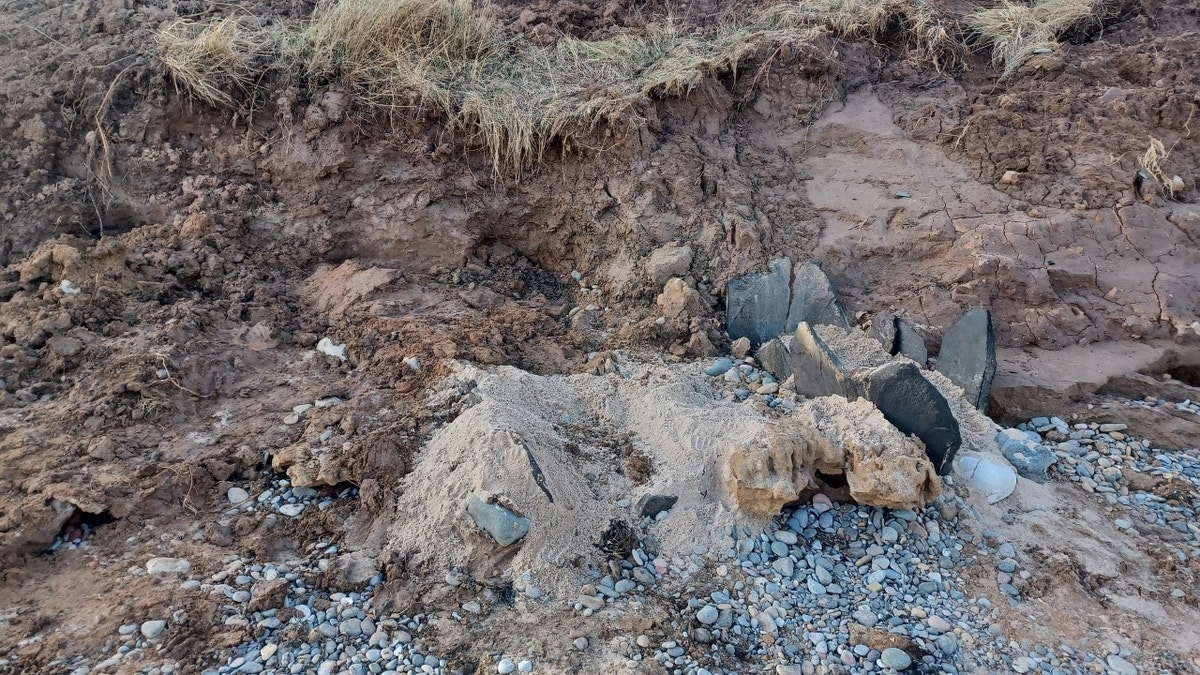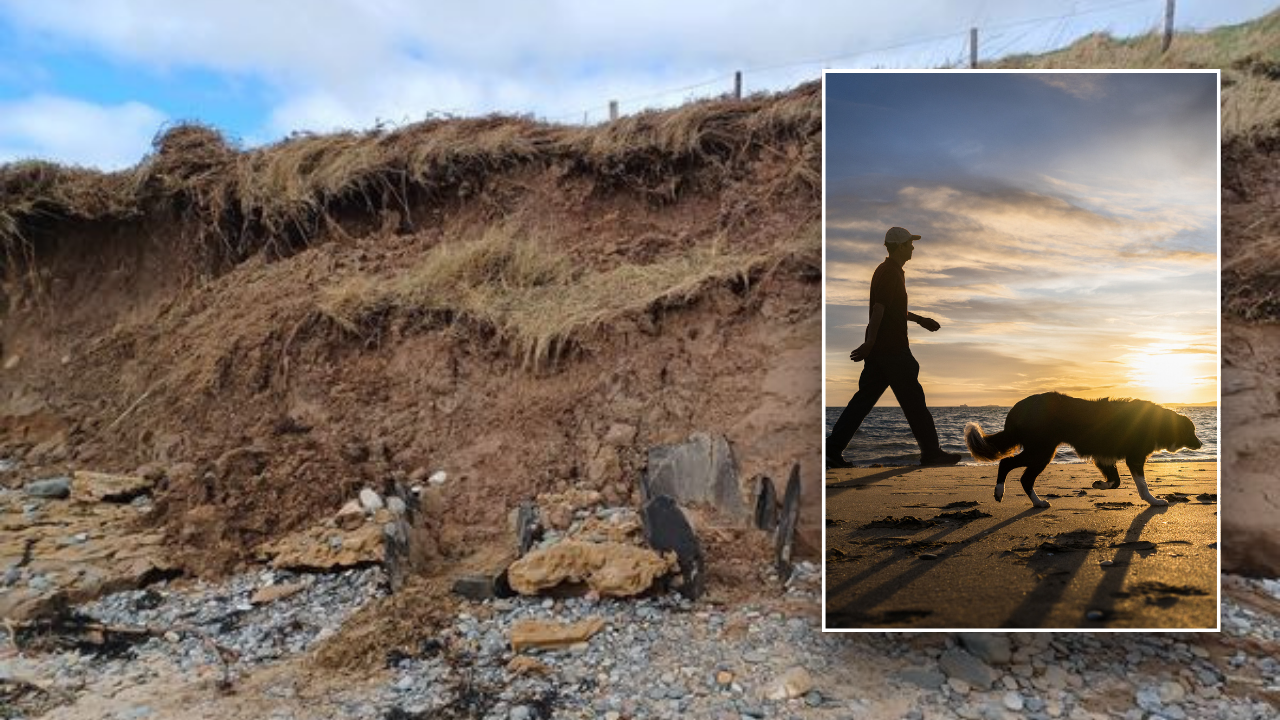A man walking his dog in the United Kingdom inadvertently helped archaeologists and geologists make surprising discoveries at a local beach, officials say.
Northumberland Coast National Landscape officials published a blog post about the recent discoveries last week. The dog walker was on a stroll at Foxton Bay in Northumberland, located in North East England, when he spotted unusual pits near the shore.
Officials thought that the pits could possibly be graves dating back to the Bronze Age or the medieval era. But experts changed their minds after an excavation.
“These pits are thought to be bait or fish tanks from the post-medieval or modern periods rather than burial costs,” the blog post explained. “Key features of the tanks are side and base slabs made of shale and a thick clay lining. They are around 1m x 0.5m and an almost oval shape and have no top slabs.”
THOUSAND-YEAR-OLD DISCOVERY COMES AS ‘COMPLETE SURPRISE’ TO EXPERTS
A man walking his dog in Northumberland came across interesting historical structures by accident, officials say. (Nothumberland Coast National Landscape)
Nothumberland Coast National Landscape communicators officer Helen Wilson-Beevers told Fox News Digital that one of the pits was noticed back in 2013, but the rest of the structures were unknown to officials.
“Our current hypothesis is that they date back to somewhere between the 17th and 20th centuries,” Wilson-Beevers explained.
QUARRY WORKERS JUST DOING THEIR JOBS MAKE PREHISTORIC DISCOVERY
A local historian named Adrian Osler was able to gather information about historical fishing activity in the area, and found proof of a local fishery in the 19th century – lending credibility to the bait tank hypothesis.

A local historian found proof of a centuries-old fishery that may have used the fishing bait tanks. (Nothumberland Coast National Landscape)
“In the absence of direct evidence as to the purpose and date of these structures, they are best considered reductively in respect of known historic shoreside activities, which could include bait storage, live catch storage or preserving lines and nets,” Osler said.
CLICK HERE TO SIGN UP FOR OUR LIFESTYLE NEWSLETTER
“The principal baits used in inshore longline fisheries were limpets and mussels, either of which might convenience the fisher if held in large numbers in short-term storage in water. For example, ‘Bait [storage] pits’ cut into bedrock have been reported from Cresswell,” he added.
The tanks had been cut into “beachrock,” which is a formation of seashells and laminated shells. Wilson-Beevers told Fox News Digital that beachrock is rare to find.
A geologist called the discovery of the beachrock “surprising” and noted that it is more likely to naturally occur in tropical and sub-tropical environments.

The pits were believed to be ancient graves before officials determined that they were ancient fishing bait tanks. (Nothumberland Coast National Landscape)
For more Lifestyle articles, visit www.foxnews.com/lifestyle.
“[The beachrock’s] position implies it was formed at a time when sea level is higher than it is now,” Northumbrian Earth geologist Ian Kille was quoted as saying. “There have been fluctuations in mean sea level in post-glacial times which may account for this. This can only narrow the timeline for beachrock formation down to between approximately 1,000-6,000 years ago.”
Officials aren’t sure if the beachrock is natural or artificial, but the discovery has helped give them an idea of how coastal erosion has progressed over the years.
CLICK HERE FOR THE FOX NEWS APP
“There is a possibility the beachrock is man-made and could’ve been a mixture of beach sand and lime to stabilize the bait traps,” Wilson-Beevers said. “But the assumption we’re working with is the beachrock offers evidence that the high tide mark in this location was at one point slightly further in land than today, which is very interesting.”
